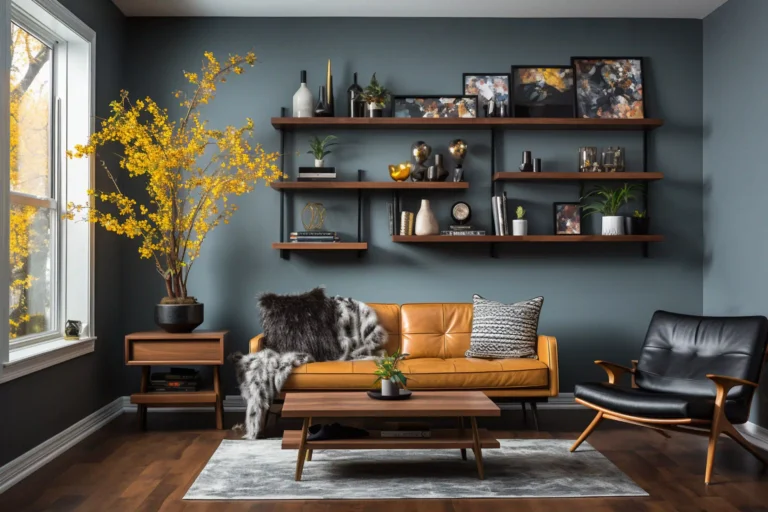Table of Contents
Implementing an automatic door closer can be an excellent remedy if you find it challenging to keep your home door shut. This guide will elucidate the necessary steps to install an automatic door closer in your abode. Discover the required tools and materials, the proper installation techniques, and more!
Introduction
An automatic door closer is an exceptional method to enhance the security and privacy of your home. Readily available in most hardware stores, these devices are straightforward to install. This comprehensive guide will walk you through the process of installing an automatic door closer in your dwelling.
What is an Automatic Door Closer?
An automatic door closer is a contrivance affixed to a door that ensures it closes autonomously after being opened. Commonly utilized in commercial and industrial edifices, these devices are also applicable in residential settings. With myriad options available, it is crucial to select the one that best fits your requirements.

Types of Automatic Door Closers
Various types of automatic door closers are accessible, each with distinct features and advantages. The most prevalent types include:
1. Hydraulic Door Closers
These closers utilize a hydraulic mechanism to close the door automatically, renowned for their smooth and silent operation.

2. Pneumatic Door Closers
Utilizing air pressure, pneumatic door closers are known for their rapid and efficient functioning.

3. Magnetic Door Closers
Magnetic force drives these closers, which are celebrated for their seamless and noiseless operation.

4. Electronic Door Closers
Employing an electronic motor, these closers are prized for their swift and effective performance.

The Purpose of an Automatic Door Closer
An automatic door closer significantly enhances the security of your home. Additionally, it can improve energy efficiency by minimizing air leakage through open doors and windows.
Advantages of Automatic Door Closers
Installing an automatic door closer in your home offers numerous advantages:
- Convenience: Eliminates the worry of forgetting to close the door.
- Energy Efficiency: Helps maintain indoor temperature by ensuring doors are always closed.
- Safety: Prevents accidents by automatically closing the door.
- Ease of Installation: Can be installed without professional assistance.
- Cost-Effective: Affordable and budget-friendly.
What You Need to Consider Before Installing
Before installing an automatic door closer, consider the following:
- Ensure the door is properly balanced by suspending a weight from its center.
- Verify sufficient clearance around the door to avoid obstructions during closure.
- Test the door to ensure it closes smoothly and correctly.
Tools and Materials Needed
Gather the following tools and materials for installation:
- Drill
- Screwdriver
- Hammer
- Automatic door closer
- Mounting brackets (if necessary)
- Screws (if necessary)
- Wire ties (if necessary)

Steps to Installing an Automatic Door Closer
Follow these steps to install an automatic door closer:
- Purchase an Automatic Door Closer: Available online or at local hardware stores.
- Remove the Old Door Closer: Unscrew and detach the existing door closer.
- Install the New Door Closer: Secure it in place with screws, ensuring they are tight.
- Test the Door Closer: Open and close the door several times to ensure proper functioning.
Troubleshooting Tips
If the automatic door closer malfunctions, consider these solutions:
- Door Not Closing Properly: Adjust the screws on the closer.
- Door Closing Too Quickly: Modify the speed control screw.
- Door Slamming Shut: Adjust the spring tension.
- Air Leakage: Replace the weather stripping.
Maintenance Suggestions for Optimal Performance
- Regularly inspect the automatic door closer for proper functioning.
- Repair or replace any damaged components promptly.
- Keep the door and surrounding area clean to prevent obstructions.
- Lubricate hinges and tracks regularly.
- Frequently test the opener and closer to ensure correct operation.
Conclusion
Installing an automatic door closer in your home is an excellent way to bolster security and convenience. It guarantees that your doors remain closed and locked, even if you forget. Although the installation process may vary based on the type of door closer and door, it can be accomplished easily with basic tools and knowledge.
People Also Ask
How do you install an automatic door seal?
To install an automatic door seal, start by measuring the width of your door and cutting the seal to fit if necessary. Clean the bottom of the door and the jamb to ensure a good adhesive bond or secure screw placement. Attach the seal to the door using the provided screws or adhesive, following the manufacturer’s instructions. Finally, test the seal to ensure it fits properly and effectively blocks drafts and light.
How do you install a simple door closer?
To install a simple door closer, begin by positioning the provided template on your door. Drill the necessary holes according to the template. Attach the closer body to the door and the arm to the door frame. Once the body and arm are attached, connect the closer arm to the closer body. Finally, adjust the closing speed and latch settings to ensure the door closes smoothly and securely.
How do you set the screw on a door closer?
To set the screw on a door closer, first locate the adjustment screws on the closer body. Adjust the closing speed by turning the closing speed screw, and modify the final closing speed by turning the latch speed screw. After making these adjustments, test the door to ensure it closes at the desired speed and make further adjustments as necessary.
How do automatic door closers work?
Automatic door closers operate using hydraulic or pneumatic mechanisms to control the door’s closing speed and force. When the door is opened, the mechanism stores energy, which is then released gradually to close the door smoothly and securely. This ensures that the door does not slam shut and closes at a controlled pace.




